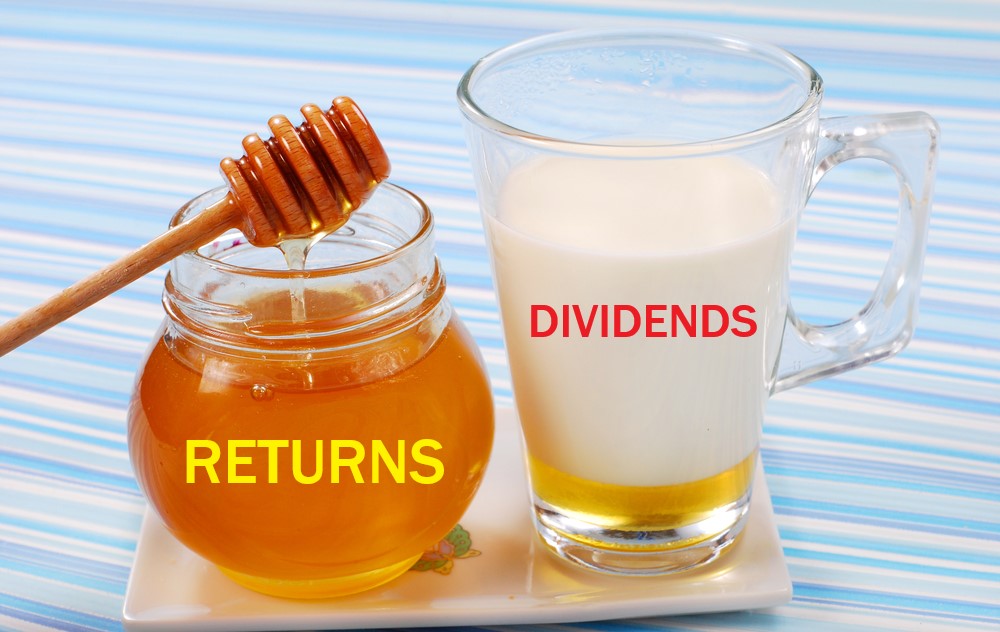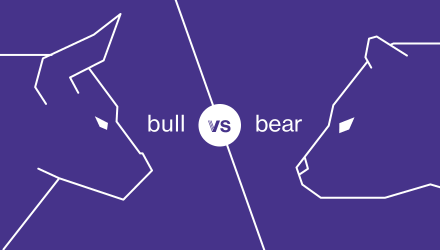Bull vs. Bear is a weekly feature where the VettaFi writers’ room takes opposite sides for a debate on controversial stocks, strategies, or market ideas — with plenty of discussion of ETF ideas to play either angle. For this edition of Bull vs. Bear, Elle Caruso and James Comtois debate the investment case for European stocks in the current market environment.
Elle Caruso, staff writer, VettaFi: Hi, James! After U.S. large caps’ steep losses last week, it’s an ideal time for investors to consider carving out an allocation to European equities. To highlight how underweight Europe most U.S. portfolios are: European equities account for only about 3% of U.S. investors’ total equity allocation, despite accounting for about 20% of the global equity universe.
European stocks are currently trading at about a 13x forward price-to-earnings ratio, below the 10-year average of 14.5x forward P/E ratio, and well below the S&P 500’s 17.2x forward P/E ratio. JP Morgan recently said it expects Europe’s discount to the U.S. to continue to narrow: it was at a historically-wide 30% before this rally, closed to about 26%, and the financials giant expects it to finish the year closer to 20%.
The ALPS International Sector Dividend Dogs ETF (IDOG) is a particularly good deal right now, exhibiting a 6.20x price-to-earnings ratio. IDOG’s deep value methodology focuses on cheaper, high-yielding companies, offering approximately 63% exposure by weight to developed countries in Europe.
James Comtois, staff writer, VettaFi: Greetings, Elle! It’s fitting that we’re talking about European stocks, since our last Bull vs. Bear debate was over travel stocks. And just as I was bearish about venturing outside of the U.S. then, I am indeed skeptical about heading overseas now. Or at least wary about targeting equities in the eurozone.
Yes, European equities do currently seem to be the land of milk and honey (and by “milk and honey,” I, of course, mean “returns and dividends”). But some signs point to things curdling. 
While the Stoxx Europe 600 Index was trading at nearly a one-year high in mid-February, it’s highly unlikely that this rally will last. Analysts are calling for many earnings downgrades, and there’s still uncertainty about what the European Central Bank will do about interest rates over the course of the year. According to a poll from Reuters, this leads fund managers and strategists to expect these headwinds to drive down European stocks.
In fact, most industry observers are forecasting a recession in Europe — and possibly a big one. In its outlook on Europe, Lazard Asset Management has argued that those forecasting a shallow recession in Europe are overly optimistic and that high energy prices and an aggressive ECB could push Europe into a recession ahead of other regions.
So, rather than dive into European equities, maybe investors seeking broad equity exposure should stick with U.S. equity-focused funds like the iShares Core S&P 500 ETF (IVV) or the Vanguard S&P 500 ETF (VOO). Or, if they’d rather venture outside of the U.S., check out a single-country ETF that targets Japan, like the Xtrackers MSCI Japan Hedged Equity ETF (DBJP).
Caruso: The past two decades favored global growth, leading it to far outpace global value; however, economists’ expectations see higher structural inflation levels benefitting a continued shift to value. Euro stocks are in a position to benefit as international markets have a much greater value tilt than U.S. stocks, with a 47% allocation to value sectors compared to U.S. markets’ 27%.
A capex cycle focused on developing the real economy is underway as a result of the pandemic and war in Ukraine, exposing supply-side vulnerabilities. This includes a new focus on supply chain resiliency, energy and food security, infrastructure, and defense, and marks a sharp pivot from the low interest rate regime that fueled growthy tech mega caps in the past decades. This regime shift — characterized by sticky inflation and higher-for-longer global interest rates — could benefit Europe’s higher weighting to industrials, materials, and energy versus its U.S. peers.
The ALPS O’Shares Europe Quality Dividend ETF (OEUR) is another fund I like, as it focuses on dividend quality to help avoid dividend cuts and suspensions and aims to provide strong performance with less risk. OEUR is outpacing broad U.S. indexes year to date, up 6%, while the S&P 500 is up less than 1%.
Comtois: Oh, you’ll hear no argument from me that there could be some great sector and value plays in Europe right now. There has indeed been a rebound in European equities, led by cyclical sectors, which have outperformed their defensive peers by nearly 20% over the last six months. But again, there are reasons to be cautious.
For one thing, according to Morgan Stanley, there’s not yet been a deterioration in cyclicals’ profitability, and the lack of any downturn makes it harder to foresee the EPS upturn required to push up share prices. Plus, an inverted yield curve, which we’re seeing now, is typically followed by a period of cyclical underperformance, not outperformance. Finally, valuations for cyclicals appear to be elevated, which usually signals their underperformance ahead.
But there’s another issue with investing in European equities that could eat up all that value: currency risk. Investors in foreign equity markets take on additional risk related to fluctuations in the exchange rate between the currency of the asset and their home currency. While European equity markets didn’t do as badly as feared over the past 12 months, the U.S. dollar’s strengthening against major European currencies did pull down the MSCI Europe Index’s USD returns for international investors, according to MSCI.
Per CME Group, since ETFs are fully funded (meaning, the full purchase price of the security must be paid to the seller at the time of trade), even if an investor is right about which way equity markets wind up going, their profits can still be more than offset by the loss on the currency move. And the euro can fluctuate a lot, making it difficult to take advantage of all that supposed value if things go south in the region (as expected) and investors can’t quickly pull out their money.
Caruso: The U.S. dollar has weakened about 10% from its recent high, while the euro has rallied and is expected to get further support from cooling U.S. inflation, other developed-world central banks raising rates, and improved growth outside the U.S. This is a positive for U.S. investors in European assets. Between October and mid-February, the Stoxx Europe 600 generated a compelling approximate 20% return in local currency terms, which translated to about 30% in dollars.
Another tailwind for European equities is China’s reopening due to the economies’ trade linkages. While Asia only accounted for about 11% of Stoxx Europe 600 revenues in 2010, it now represents more than 20%.
A final tailwind for European equities is the region’s improved energy dynamics, which has staved off the severe recession many called for going into winter. Natural gas prices have fallen by about 80% and are back at levels seen before the war in Ukraine, attributable to a mild winter and the European Union meeting targets to refill natural gas storage sites. As of January, the storage facilities’ filling level was above 80%, and Europe looks to exit winter with better gas reserves than it would even in a normal year (about 50% compared to 30% historically).
For all these reasons, I’m bullish on European equities. Plus, with attractive valuations, now is a great time to add exposure.
Comtois: While it appears that the continued war in Ukraine and its effects on energy prices and the supply chain have been baked into earnings for European companies, there’s another geopolitical situation that threatens the promise of European stocks: tensions between the U.S. and China. While the reopening of China has certainly been a tailwind, things between the U.S. and China have been tense (or at least, more tense than usual) since the U.S. popped one of China’s balloons like a bully in an ’80s film. And if tensions rise, Europe could be caught in the middle and may be forced to take a side.
Which could be a challenge. After all, not only are Europe’s clean energy supply chains already dependent on China, but China could also become the biggest battery manufacturer in Europe within a decade, controlling the most important part of the EV production chain, according to senior policy fellows at the European Council on Foreign Relations. Of course, not taking a position is also not a viable option.
And all of this is on top of there still being a ground war taking place in Eastern Europe. So, this, combined with the distinct possibility of a looming recession and the added complications of currency exchange risk, makes me more than a bit cautious about European stocks’ prospects.
For more news, information, and analysis, visit the ETF Building Blocks Channel.
vettafi.com is owned by VettaFi LLC (“VettaFi”). VettaFi is the index provider for IDOG, for which it receives an index licensing fee. However, IDOG is/are not issued, sponsored, endorsed, or sold by VettaFi, and VettaFi has no obligation or liability in connection with the issuance, administration, marketing, or trading of IDOG.









